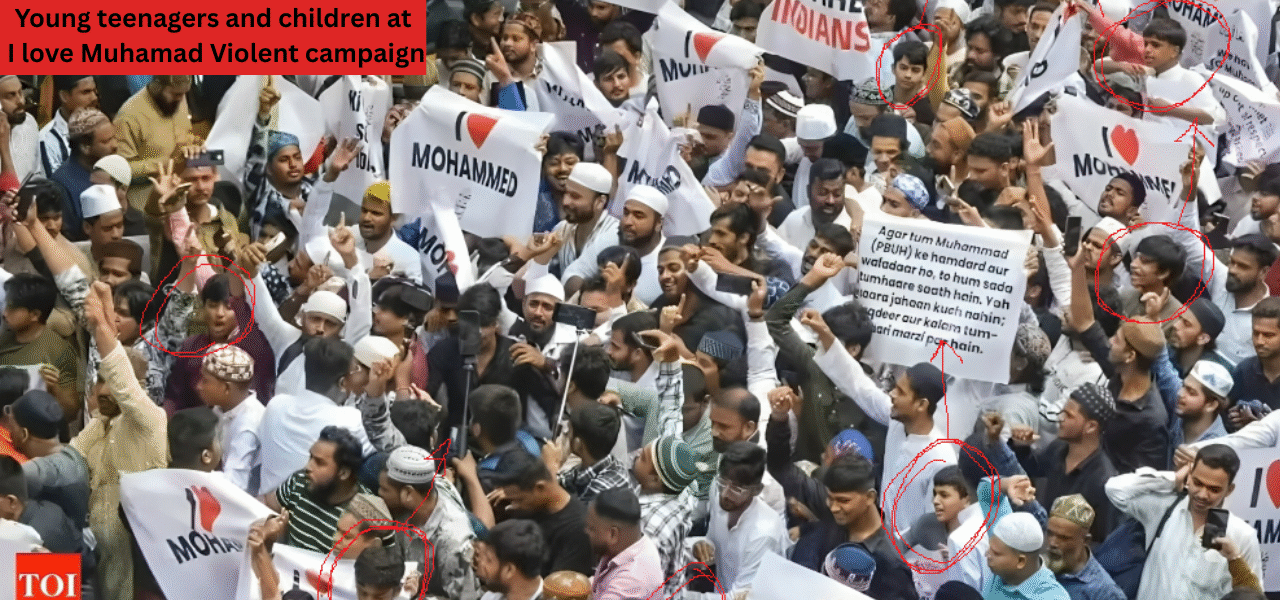Investigating Recent Bareli Violence During Navratri: Context, Facts, and the Challenge of Law and Order
India has witnessed unsettling scenes during the recent Navratri celebrations, marked by violence attributed to groups mobilised under the “I Love Muhammad” campaign. The disturbing escalation in multiple regions, notably in Uttar Pradesh, has raised alarm over the involvement of teenage youths and children in these confrontations, prompting concerns about broader patterns and external influences on social unrest.
What Happened?
During Navratri, a significant festival for millions of Hindus, local authorities reported organised protests and instances of violence attributed to Muslim crowds advocating the “I Love Muhammad” slogan. In several areas, law enforcement described attempts to disrupt festivities, including stone pelting and attacks on public property, allegedly involving not just adults but also teenagers and children.
Eyewitness accounts and official reports suggest that minors were encouraged or manipulated to participate in acts of aggression, intensifying the impact and complicating the law enforcement response. The utilisation of children in such contexts is especially troubling, violating ethical boundaries and raising questions about underlying motivations and social dynamics.
Global Toolkits & Geopolitical Disruptions: India in the Crosshairs
Law and Order at Stake
The scale and intensity of these confrontations in Uttar Pradesh led to the perception that mobs had, albeit temporarily, challenged the state’s authority, straining police resources and necessitating forceful intervention. The situation came to a head when Chief Minister Yogi Adityanath intervened directly, ordering swift, robust police action to restore peace and prevent escalation. Officials implemented curfews in sensitive areas, detained alleged instigators, and issued public appeals for restraint.
Broader Context and Patterns
Analysts point out that such violent outbreaks are not isolated events but may be symptoms of deeper societal fissures. Several recent articles and expert commentaries have highlighted the possibility of coordinated efforts and larger conspiracies designed to destabilise communal harmony, referencing patterns of violence, propaganda, and external funding or influence.
Concerns about “vested interests” with “foreign hands” have gained traction amidst shifting geopolitical realities, especially following India’s cautious stance toward U.S. trade overtures. Security commentators argue that the timing and nature of these incidents suggest geopolitically motivated attempts to exploit internal divisions for strategic advantage.
Rising Geopolitical Tensions: Islamic Radicalism, Refugee Crisis, and the Shifting Global Order
The Role of Children and Community Responsibility
Of particular concern is the reported involvement of minors in the unrest. Using children as participants or instruments in violent protests is widely condemned and considered a violation of their rights and societal norms. Social workers, child rights advocates, and community leaders have called for urgent measures to protect young people from such harmful influences and prevent their exploitation.
The Challenge Ahead: Root Causes and Preventive Measures
While swift police action under Chief Minister Yogi Adityanath restored order in the immediate aftermath, experts warn that reactive measures alone may not address the underlying causes. The need for comprehensive strategies that go beyond policing—such as social outreach, counter-radicalisation initiatives, education, and dialogue—is increasingly recognised.
India’s policymakers and security agencies are being urged to investigate the root causes of communal violence, including misinformation, foreign propaganda, economic disparities, and the manipulation of youth. Proactive engagement and holistic approaches are considered essential to prevent recurrence and to uphold the nation’s stability.
Conclusion
The violence during Navratri, particularly the involvement of children, stands as a stark reminder of the complex social and geopolitical dynamics facing India. Addressing these challenges will require diligence, transparency, and the willingness to confront both internal vulnerabilities and external threats—while always safeguarding the rights of every citizen, especially the young.
Discover more from
Subscribe to get the latest posts sent to your email.






